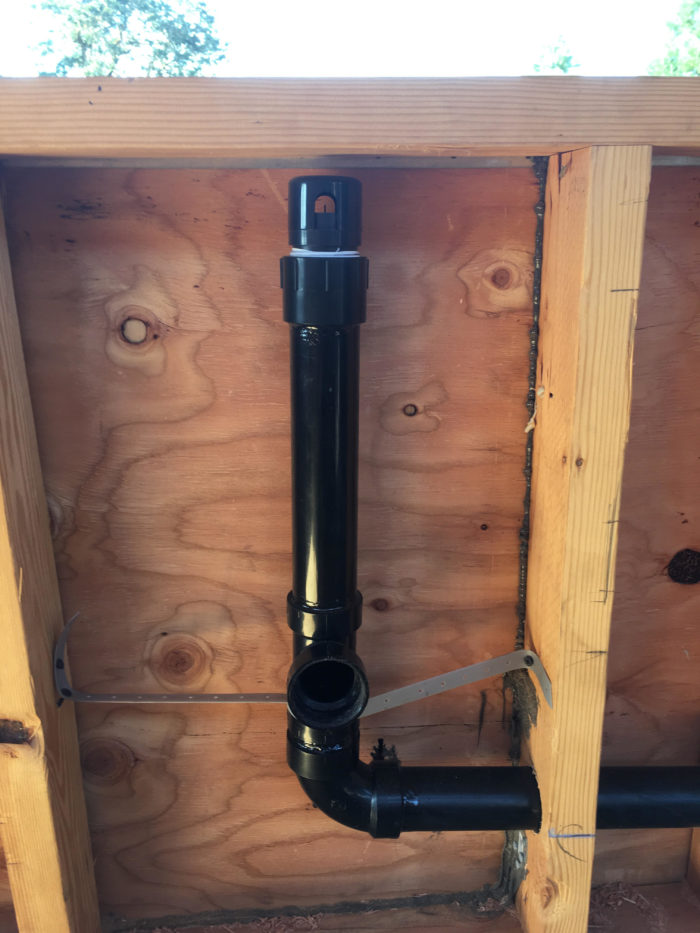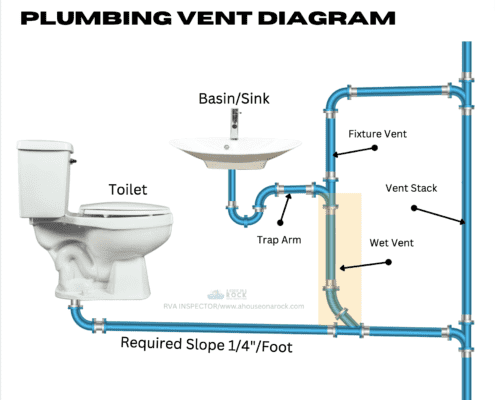The writer is making several good points on the subject of The Upsides of Proper Ventilation in Plumbing Design as a whole in the article underneath.

Correct ventilation in pipes systems is typically forgotten, yet it is important for keeping the functionality and security of your home's pipes. Air flow helps regulate air pressure, stop the build-up of hazardous gases, and guarantee the effective elimination of waste. In this overview, we will certainly explore the importance of proper plumbing ventilation, how it functions, and the benefits it brings to your pipes system.
Exactly How Air Flow Functions in Pipes Systems
Air Pressure Guideline
Proper air flow preserves well balanced air pressure within the pipes system. When water flows with pipelines, it displaces air. Without sufficient air flow, this variation can create unfavorable stress, resulting in slow down drains pipes or siphoning of water from catches, which can cause unpleasant odors to leak into the home.
Avoiding Sewage System Gas Accumulation
Among one of the most crucial features of plumbing vents is to stop drain gases, such as methane and hydrogen sulfide, from accumulating within the home. These gases can present serious health and wellness threats and are extremely combustible. Vent pipes enable these gases to escape securely outside.
Assisting in Waste Elimination
Ventilation helps in the effective elimination of wastewater by stopping airlocks in the drain system. When air can flow freely via the vents, it allows water and waste to move efficiently through the pipes, minimizing the risk of obstructions and back-ups.
Advantages of Appropriate Air Flow
Improved System Efficiency
Effectively aerated plumbing systems operate extra successfully, with fewer obstructions, faster draining, and much less pressure on the pipes. This performance extends the life expectancy of the pipes system.
Improved Air Quality
By protecting against sewer gases from entering your home, proper ventilation adds to far better interior air high quality, making your living environment healthier and a lot more comfy.
Protecting Against Water Damages
Appropriate ventilation assists stop water from being siphoned out of traps, which can lead to sewage system gases getting in the home and creating water damage gradually.
Actions to Make Sure Appropriate Ventilation
Consulting Pipes Codes
Constantly seek advice from regional plumbing codes when creating or customizing your pipes system. These codes supply the required standards for proper airing vent and ensure your system fulfills safety criteria.
Regular Examination and Maintenance
Routine inspections can assist recognize prospective air flow problems before they end up being major problems. Upkeep jobs, such as cleaning air vent pipes and checking for clogs, are crucial for maintaining the system in good working order.
Specialist Installation
For brand-new setups or significant alterations, it's important to work with a specialist plumber. They have the experience to ensure the ventilation system is correctly made and mounted according to code.
Recognizing Air Flow in Plumbing
Air flow in pipes refers to the network of pipes that permit air to stream through the water drainage system. These vents serve multiple objectives, including managing air pressure within the pipes, stopping sewage system gases from getting in the home, and aiding in the smooth flow of wastewater.
Kinds Of Plumbing Vents
Main Heap Vent
The major stack vent, likewise referred to as the vent stack, is the key vent in a pipes system. It expands from the primary drain line up with the roofing system, permitting gases to escape and fresh air to get in the system.
Branch Vent
Branch vents connect to the major pile air vent and offer private components, such as sinks, commodes, and showers. These vents guarantee that each fixture has appropriate air flow to work effectively.
Air Admission Shutoff (AAV).
An Air Admission Shutoff (AAV) is a one-way valve that allows air to enter the plumbing system without the requirement for a conventional air vent pipe expanding with the roof. AAVs are frequently used in improvements or areas where mounting a basic air vent is impractical.
Indications of Poor Air Flow in Pipes.
Slow Draining Fixtures.
If your sinks, tubs, or toilets are draining pipes slowly, maybe a sign of bad air flow. Inadequate air flow can create a vacuum cleaner result, making it tough for water to drain pipes correctly.
Gurgling Sounds.
Gurgling noises coming from drains pipes are frequently a result of air being drawn with water traps because of adverse stress in the pipes. This is a clear indicator of inadequate air flow.
Undesirable Smells.
Sewage system smells inside your home are a warning that your pipes system is not properly ventilated. This could mean that sewer gases are not being sufficiently vented outside, resulting in potentially hazardous problems.
Usual Air Flow Errors.
Inadequate Vent Sizing.
Using small air vent pipes can bring about bad air flow and pressure imbalances in the system. It's essential to make use of vents that satisfy the particular requirements of your plumbing system.
Improper Vent Placement.
Placing vents also far from the components they offer can lower their effectiveness. Appropriate positioning ensures that air can flow openly and efficiently with the system.
Ignoring Code Needs.
Building regulations give particular standards for pipes air flow. Ignoring these codes can lead to a system that falls short to operate correctly and may result in expensive repair services or carcinogen.
Verdict.
Correct air flow is a crucial component of any plumbing system, ensuring that it functions efficiently and securely. By recognizing the value of ventilation, recognizing the signs of inadequate air flow, and taking actions to keep your system, you can stop pricey concerns and secure your home's air top quality.
What is a Plumbing Vent and it's used for?All plumbing systems in residential and commercials construction have a plumbing vent. It doesn’t just vent unwanted odors from the drainage system to the outside; it actually serves an important purpose by supplying air to the system.
The plumbing drainage system is actually called a drainage, waste and vent (DWV) system. When water flows down the piping, an air supply (vent) is needed to allow the water to flow. Think of the vertical pipe as a drinking straw. If you plug the top end of a straw, liquid won’t drain from it.
The DWV system in your building consists of a series of pipes connected to each fixture; they extend above each fixture, and the system terminates at an open pipe that extends through the roof. This piping allows air into the system and prevents unbalanced pressures in the piping.
?The vent also prevents the system from drawing water out of a trap at the fixture with the characteristic “glug-glug-glug” as the drain gasps for air. Plumbing traps should drain smoothly and never “glug” or gasp for air.
If you have a drain that empties slowly or gurgles as it drains, this may indicate a venting problem. If you flush a toilet and the sink gurgles, there’s definitely a vent problem. It is good idea to have a Plumber check this.
https://www.ameliashomeinspection.com/blog/what-is-a-plumbing-vent-and-its-used-for

Hopefully you enjoyed our excerpt on What Is A Plumbing Vent & How Do They Work?. Thanks for taking time to read our article. Do you know about somebody who is curious about the topic? Why not promote it. I treasure your readership.
Click Here